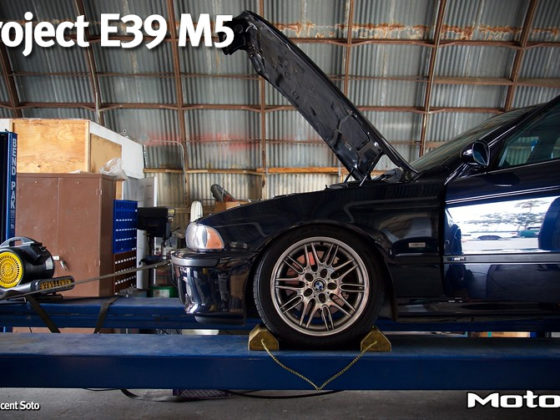,
 The Mercedes-Benz AMG GT3 cockpit.
The Mercedes-Benz AMG GT3 cockpit.And, while racing, the in-game views are really quite amazing. Sun and weather effects are really beautiful. It can make it difficult to pay attention to what you’re doing when you’re busy enjoying the view or when you’re fumbling for the windshield wiper button and driving off the track.
This is the inside of the Mercedes-Benz AMG GT3. The attention to detail is amazing. The lighting effects even show in the cockpit, with shadows and reflections being cast about. As you go near and over striped curbing, you even see the colored curbing reflections on the A-pillar. The dash is fully functional, and even has different modes that can be cycled through, just like in real life. Turning on the headlights even causes the dash indicator to come on. Engaging the pit speed limiter causes the dashboard and shift lights to flash. Each car’s dash provides the features that it would in real life, with some providing lots of amazing functionality and with older or simpler cars providing next to nothing besides a tach and oil pressure.
The sim’s own HUD is fairly tasteful, and provides decent detail and feedback about what’s going on in-car, from tire temperature/wear to brake temp as well as whether or not anything is broken. You can enable full, realistic damage which also takes time to repair in the pits — proportional to the damage that you’ve done.
There’s also a more detailed telemetry mode that shows you a ton more information about what’s going on with the car- although I’m not entirely sure how it’s valuable when you’re driving.
 Look at that sun glare! Where are my shades?
Look at that sun glare! Where are my shades?Replay mode is gorgeous as well. After you get done driving around you almost want to sit and watch the entire thing just to see how cool the replays look. The AMG GT3 comes complete with fire-breathing downshifts.
But, enough about looking sexy. How does it work?
It works pretty darned good.
After spending quite a few hours in career mode driving a crappy low-powered Ginetta and wheeling the Mercedes GT3 around Imola, I can say that it all comes together quite nicely. The handling of cars is predictable and the physics, especially of the tires, is on point. When cars get a little sideways they can be appropriately controlled and behave like one would expect. Heavy squishy cars tend to roll around a bit on their suspensions. There are even graphics effects you can turn on to simulate head movement due to G-forces, which becomes especially apparent in something like an LMP3 car.
Even the off-road / low traction situations feel like I would expect. Curbs do what you think they will do to the handling of the car. Braking too late and too hard causes the rear end to come around. It’s got everything you would think should be there in an accurate simulation.
I only have a few complaints about the simulator overall, and one of them is about the steering force feedback. Steering force feedback has several knobs and levers you can adjust to increase or decrease things like feedback from the road, stiffness/force of the wheel, and etc. And, of course, different cars provide different steering feedback, attempting to simulate what they might feel like in real life. There are several flavors (the game’s words, not mine) to set the overall style of the feedback — from “immersive” (the base setting) to “informative” (slightly more feedback) to “raw” (the most feedback and real-world feeling).
However, even in raw mode, certain cars just felt weird. For example, the Mercedes AMG GT3 had an odd heavy but disconnected feeling to it. Other cars that I wouldn’t expect to feel numb kind of did. However, there’s one mode that lets a person go “all out”: custom.
The custom FFB mode enables the use of a config file on the PC (and only the PC) where you can go even deeper diddling settings and pulling levers. Project Cars 2 has a fairly active forum, and this post has a number of custom FFB config files for you to try. I fired one up and immediately felt that the steering was truer to feel. Or, at least, felt better to me.
One other nit to pick had to do with the configuration of the Fanatec shifter. Again, the PC2 forum came to the rescue, but it took a while to figure out that one had to shift into gear, and then shift back into neutral (out of gear), before the PC2 configuration system would recognize what “button” the shifter had pressed. I assume that the Logitech shifter would’ve suffered from the same problem, but I did not try the G920 and shifter setup with PC2. If you only have paddle shifters or a game pad, you would never notice this, though.
Lastly, there is some odd bug in the display configuration where, no matter how many times I seem to turn on the simulated rear-view mirror (not the vehicle’s mirrors), it seems to forget this setting. Every racing event I have to turn it off and turn it back on in order for it to work. It’s odd. I’m sure there’s some other setting that I have turned on that is causing this behavior, but I haven’t had a chance to chase it down.
Late in my experience with the game, I finally started to explore ICM — In-Car Management. This is a menu where you can adjust certain traits of the car, while driving, that would be authentically available on the vehicle. For instance, you can alter brake bias, ABS engagement, traction control, and, on some cars, even the fuel mapping all while driving.
Since we’re on the topic of altering set-up, let’s see what options Project Cars 2 offers for car setup, shall we?
 Get your race engineer on.
Get your race engineer on.Project Cars 2 offers an immense number of vehicle settings to play with. From things you would expect such as suspension and tire pressure, to things you might not expect like fine-grained control over traction control, brake pressure, brake bias and even ABS levels. As an overall game setting, you can enable or disable various vehicle assists like they would exist in real life. For example, that old Lotus formula car is not going to have ABS…
 Or, ask the in-game race engineer.
Or, ask the in-game race engineer.Not everyone is a full-on race engineer who knows how to pull all of the levers when it comes to setting up a car. Fortunately for you, Slightly Mad Studios puts a race engineer at your disposal, on demand. Through a series of interactive dialogs, much like in real life, you can have a “conversation” with your race engineer who will help determine what setting changes to make on the car to alter its performance characteristics to your liking. I think this is a really neat feature, and wish more simulators offered something like it. Especially on more advanced vehicles, and even with today’s highly complex factory cars, it can be a daunting task to figure out how to change the setup.
So, now that you’ve got everything set up and you’ve played with yourself for a while, it’s time to explore other opponents. How about the computer in non-season mode, first?



